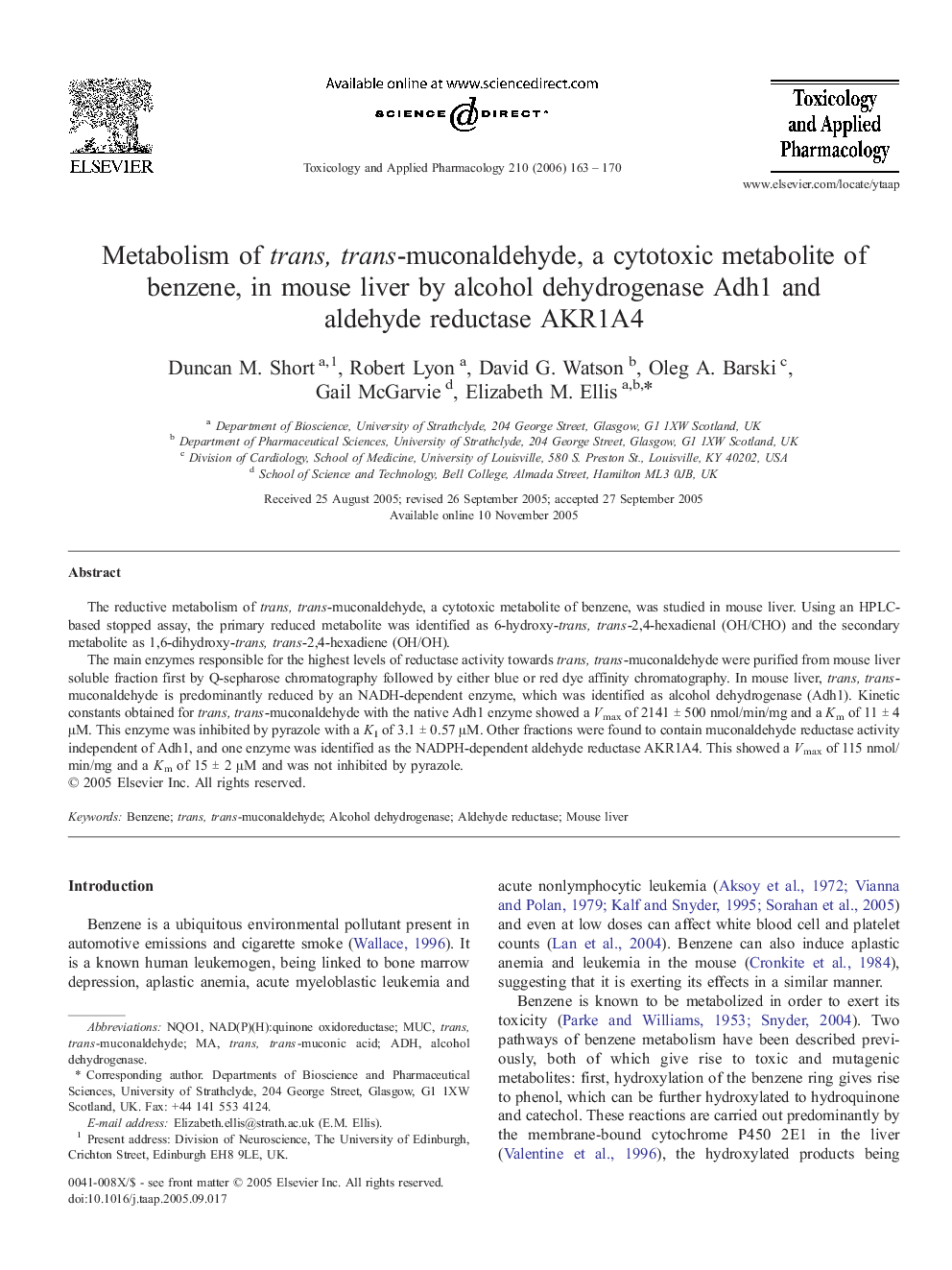| Article ID | Journal | Published Year | Pages | File Type |
|---|---|---|---|---|
| 2571915 | Toxicology and Applied Pharmacology | 2006 | 8 Pages |
The reductive metabolism of trans, trans-muconaldehyde, a cytotoxic metabolite of benzene, was studied in mouse liver. Using an HPLC-based stopped assay, the primary reduced metabolite was identified as 6-hydroxy-trans, trans-2,4-hexadienal (OH/CHO) and the secondary metabolite as 1,6-dihydroxy-trans, trans-2,4-hexadiene (OH/OH).The main enzymes responsible for the highest levels of reductase activity towards trans, trans-muconaldehyde were purified from mouse liver soluble fraction first by Q-sepharose chromatography followed by either blue or red dye affinity chromatography. In mouse liver, trans, trans-muconaldehyde is predominantly reduced by an NADH-dependent enzyme, which was identified as alcohol dehydrogenase (Adh1). Kinetic constants obtained for trans, trans-muconaldehyde with the native Adh1 enzyme showed a Vmax of 2141 ± 500 nmol/min/mg and a Km of 11 ± 4 μM. This enzyme was inhibited by pyrazole with a KI of 3.1 ± 0.57 μM. Other fractions were found to contain muconaldehyde reductase activity independent of Adh1, and one enzyme was identified as the NADPH-dependent aldehyde reductase AKR1A4. This showed a Vmax of 115 nmol/min/mg and a Km of 15 ± 2 μM and was not inhibited by pyrazole.
